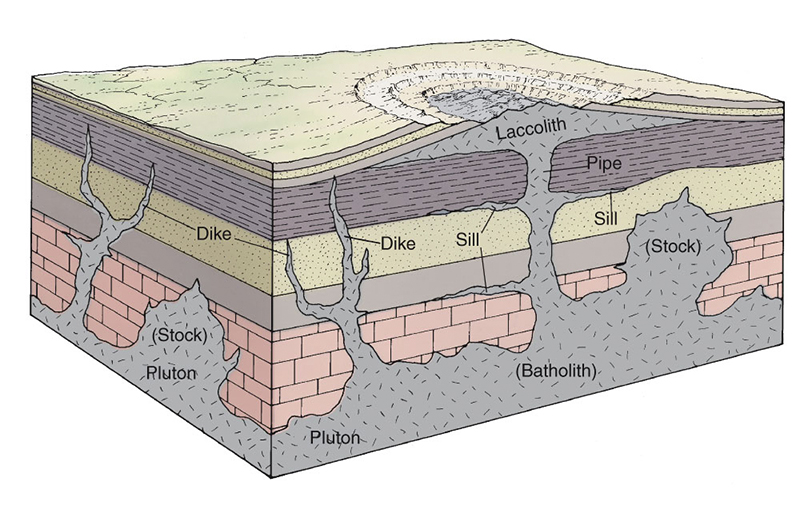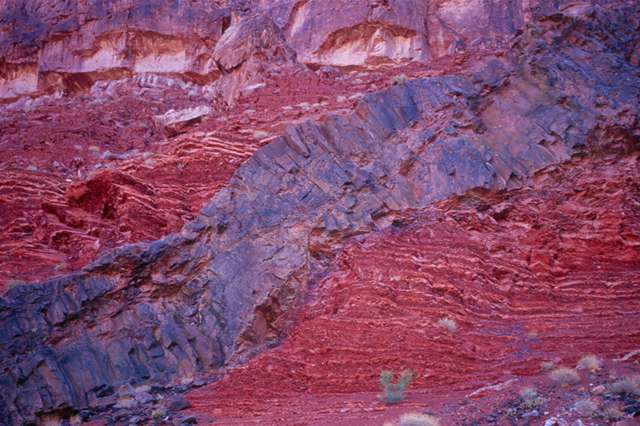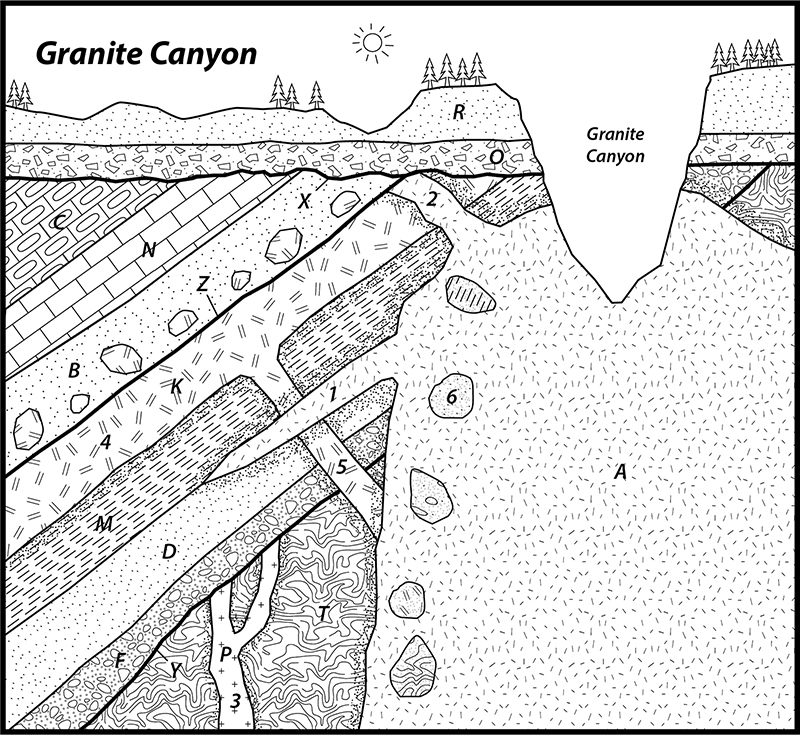Part D
Plutonic Rocks & Structures in Sequence Diagrams
We know from study of plutonic rocks that have been uplifted and exposed at the Earth's surface that magmas crystallize in various shapes. Igneous structures that form from the intrusion of magma are termed plutons (see FIgure 5-16). We know from field and geophysical studies that plutons have various shapes, but we can also directly study these features after they have been uplifted and exposed at the surface, typically millions of years after the magma originally solidified. Plutons can be classified according to their size and shape, ranging from enormous batholiths to smaller, irregular stocks to thin sills and dikes.
Types of Plutons
Pluton - A generic term for any intrusive igneous body.
Batholith - A very large intrusion (>100 km2) that usually consists of multiple plutons emplaced over thousands to millions of years.
Stock - An intrusion with irregular shape and much smaller than a batholith.
Sill - A tabular, sheet-like pluton that generally follows the layering in the surrounding rock. Typically emplaced at shallow crustal levels.
Dike - A thin intrusion that typically cuts across the layering in the surrounding rock. Typically emplaced at shallow crustal levels.
Laccolith - A shallow crustal intrusion injected between two layers of sedimentary rock, arching the overlying layers upward.
|
Example 8 |
|
Is this intrusion a sill or a dike? |
|
It cross-cuts the layering in the surrounding rocks, so it's a dike. Click on the image to see a larger, annotated version. |
Plutonic structures can be very useful in establishing the relative ages of rocks in a geologic cross section. The relative dating principles of cross-cutting relations ![]() and inclusions
and inclusions ![]() are very helpful determining the order of intrusions. Intrusions typically have "bake zones" or "contact aureoles" around their margins, where the surrounding rocks have been changed by the high temperatures and fluid activity of the intrusion. Plutonic rocks also may provide absolute age determinations if they have compositions suitable for isotopic dating.
are very helpful determining the order of intrusions. Intrusions typically have "bake zones" or "contact aureoles" around their margins, where the surrounding rocks have been changed by the high temperatures and fluid activity of the intrusion. Plutonic rocks also may provide absolute age determinations if they have compositions suitable for isotopic dating.
Geology of Granite Canyon
Granite Canyon is a place where intrusive structures are on display, and you will find their relations are very helpful in solving its geologic history sequence.
|
Figure 5-17. The Granite Canyon geologic sequence diagram. Click HERE for a printable PDF version of this sequence diagram. |
Answer Quiz Me! questions D44 through D50 using the Granite Canyon sequence diagram (Figure 5-17). If necessary, you can print a hard-copy of the diagram (see the link above). Also refer to the Key to Map Fill Patterns (click HERE for a printable PDF version).
![]()
![]()
![]()
![]()
![]()
![]()
![]()
After finishing this lesson, complete the form below:


